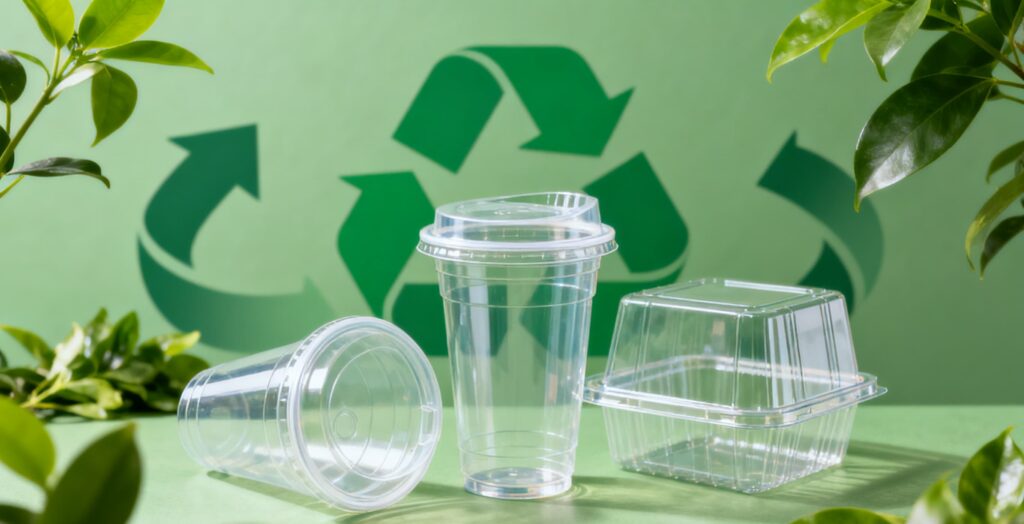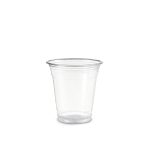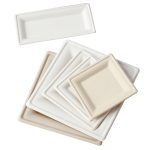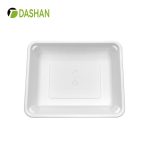This article explores why PET plastic packaging has become the leading solution for fresh food in 2025. From its transparency and durability to its compliance with international food safety standards, PET provides unmatched advantages over other materials like PP, PLA, paper, and aluminum. It is widely used in salad boxes, snack boxes, fruit clamshells, drink cups, and airline catering. PET’s recyclability and compatibility with circular economy models further reinforce its role in sustainable packaging.
Introduction – The Rising Demand for Fresh Food Packaging
The global fresh food market continues to expand as consumers demand healthier options, ready-to-eat meals, and convenient packaging that preserves freshness without compromising safety. Alongside this trend, expectations for food packaging design, sustainability, and transparency have grown significantly. Among the wide range of materials available, PET (Polyethylene Terephthalate) has emerged as the leading choice for fresh food packaging, setting the standard for both safety and presentation.
The year 2025 marks a crucial turning point, as industries worldwide move toward higher recycling rates, sustainable innovations, and stricter compliance with international food safety regulations. PET packaging stands out as the most reliable solution, combining functionality, cost-effectiveness, and eco-friendliness.

What Is PET Plastic?
Chemical Composition of PET (Polyethylene Terephthalate)
PET is a type of thermoplastic polymer resin in the polyester family. It is made through the polymerization of terephthalic acid and ethylene glycol. This composition gives PET its unique combination of clarity, strength, and lightweight properties, making it one of the most widely used plastics for food-grade applications.
PET vs RPET vs CPET – Key Differences
-
PET: Virgin plastic known for its high clarity, lightweight structure, and strong barrier against oxygen and moisture.
-
RPET (Recycled PET): Derived from recycled PET containers and bottles, providing an eco-friendly alternative that reduces carbon emissions.
-
CPET (Crystallized PET): Modified PET with enhanced heat resistance, ideal for oven-ready and airline catering trays.
Food Contact Safety Standards (FDA, EU Regulations)
PET complies with rigorous international food safety standards. Both the U.S. FDA and the EU authorize PET as safe for direct food contact. It does not leach harmful chemicals into food, ensuring consumer safety when used in beverages, fruits, bakery items, and ready-to-eat meals.
Advantages of PET Food Packaging
Transparency and Aesthetic Appeal
One of PET’s standout benefits is its crystal-clear appearance. For retailers and foodservice operators, this transparency enhances the presentation of fruits, pastries, and salads, making products visually appealing and attractive to consumers.
Strength and Durability
PET packaging is sturdy enough to withstand stacking, shipping, and display without cracking. This durability ensures products remain protected throughout the supply chain.
Lightweight but Protective
Compared to glass or aluminum, PET provides an excellent strength-to-weight ratio. Its lightweight design reduces transportation costs while still offering robust protection against external pressures.
Leak Resistance for Fresh Foods
PET containers are designed with secure lids and anti-leak features, making them ideal for packaging salads, sauces, and snacks. Leak resistance ensures both safety and hygiene during handling.
Temperature Tolerance
PET performs well in cold chain logistics, refrigeration, and icebox storage, maintaining its integrity without warping or breaking. While not designed for oven use (except for CPET), PET is perfect for chilled and fresh applications.
Recyclability and Sustainability
PET is 100% recyclable and has one of the highest recycling rates among plastics. Compared with PLA, paper, or multi-layer composites, PET offers a more established recycling infrastructure worldwide.

Applications of PET in Fresh Food Packaging
PET Salad Boxes
Tamper-proof designs make PET salad boxes highly popular for ready-to-eat meals, catering, and retail. They combine safety with visibility.
PET Clear Snack Boxes with Lids
These disposable snack boxes with lids are ideal for pastries, fruits, and small snack items. They maintain freshness, provide excellent display value, and are widely used in bakeries, supermarkets, and convenience stores.
PET Drink Cups
From bubble tea to smoothies and juices, PET drink cups offer durability, clarity, and customization options with different lid designs.
PET Fruit Trays & Clamshells
Supermarkets and convenience stores rely on PET trays and clamshells to keep berries, grapes, and cut fruits secure while maintaining freshness.
Airline Catering and Travel Industry
PET has become essential in travel-friendly packaging solutions, where lightweight, sealed, and attractive containers are necessary for on-the-go meals.

PET Food Packaging vs Other Materials
PET vs PP (Polypropylene)
PP offers good resistance to heat but lacks the crystal-clear transparency of PET. For fresh produce and pastries, PET’s clarity provides a superior consumer experience.
PET vs PLA (Polylactic Acid)
PLA is compostable but has limited temperature resistance and cannot hold hot food or beverages effectively. PET remains more versatile and recyclable on a global scale.
PET vs Paper Packaging
Paper packaging lacks the moisture barrier properties of PET, making it unsuitable for liquid-rich foods or long-term freshness preservation.
PET vs Glass or Aluminum
Glass and aluminum are durable but heavier and more costly to transport. PET provides similar protection at a fraction of the weight and cost.
Environmental Benefits of PET
-
High Recycling Rates: Europe reports PET recycling rates above 50%, with ongoing efforts to increase this number further.
-
RPET Applications: Many brands are integrating 30–100% RPET into packaging to meet sustainability goals.
-
Carbon Footprint Reduction: Airlines, retailers, and foodservice operators reduce CO₂ emissions by switching to lightweight PET packaging.
-
Corporate Sustainability Reports: Global companies highlight PET’s recyclability and lightweight design as part of their carbon reduction initiatives.
Challenges and Considerations
-
Petroleum-based Debate: PET is derived from fossil fuels, raising sustainability concerns despite its recyclability.
-
Cost Fluctuations: Raw material costs for PET can be affected by global oil market volatility.
-
Recycling Infrastructure Gaps: Some regions lack proper recycling facilities, limiting PET’s circular potential.
-
Consumer Misconceptions: Many consumers mistakenly believe PET is non-recyclable, underestimating its environmental benefits.
Future Trends of PET Packaging in 2025 and Beyond
-
High RPET Content: More companies aim to use 50–100% recycled PET in packaging.
-
Bio-PET Integration: Combining PET with renewable raw materials to create partially bio-based plastics.
-
Lightweighting: Reducing material use without compromising durability.
-
Smart Packaging: QR codes, freshness indicators, and traceability tags integrated into PET packaging.
FAQ
Is PET food packaging recyclable everywhere?
Not everywhere, but PET has one of the most widely established recycling networks globally.
Can PET containers be used for hot food?
Standard PET is designed for cold and room-temperature foods. For hot applications, CPET is used.
Are PET snack boxes safe for children’s lunches?
Yes. PET containers are food-safe, lightweight, and durable, making them suitable for school lunchboxes.
What is the difference between PET and RPET?
RPET is recycled PET, offering the same benefits as virgin PET but with a lower carbon footprint.
Does PET affect the taste or smell of food?
No. PET is inert and does not alter the flavor, color, or smell of food.
Conclusion
PET plastic has solidified its position as the leading material for fresh food packaging in 2025. Its combination of clarity, strength, recyclability, and consumer appeal makes it indispensable for supermarkets, bakeries, and airlines alike. While challenges exist, ongoing innovations in RPET, Bio-PET, and recycling infrastructure will ensure PET remains central to the future of sustainable food packaging.
References
Food Standards Agency – Food Contact Materials Guidance
https://www.food.gov.uk/business-guidance/regulated-products/food-contact-materials-guidance
UK Government – Packaging (Essential Requirements) Regulations
https://assets.publishing.service.gov.uk/media/5a74dbbae5274a59fa71580d/BIS-15-460-packaging-essential-requirements-regulations-gov-guidance-notes.pdf
SGS – Food Contact Product Certification Mark
https://www.sgs.com/en-gb/services/sgs-food-contact-product-certification-mark
TÜV SÜD – Certification Mark for Products with Food Contact
https://www.tuvsud.com/en-gb/services/product-certification/ps-cert/certification-mark-for-products-with-food-contact
Intertek – Food Contact Materials Testing & Food Packaging Analysis
https://www.intertek.com/packaging/testing/food-analysis/
Xiamen Dashan – PET Packaging Solutions
https://www.dashanpacking.com




